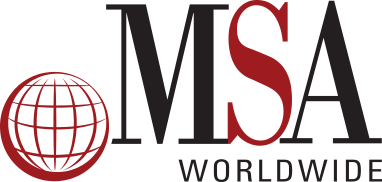Though problems in training execution can be the source of service or product issues, take the time to sort out whether other factors in your system are to blame.
By Marla Rosner, Senior Learning & Development Consultant, MSA Worldwide
While training is the DNA through which a franchise concept is replicated, it isn’t easy to execute employee training programs through a multi-layered organization. Distribution of training programs often needs to penetrate franchisees, general managers, and location managers before employees are exposed to it. The child’s game of “telephone” seems analogous; each child in a circle whispers a message into the ear of the next until a garbled, barely recognizable interpretation is announced by the last person. Small surprise that franchisors may spend substantial resources on developing training programs but still find products and/or services at the unit level falling short of standards.
Though problems in training execution can be the source of service or product issues, take the time to sort out whether other factors in your system are to blame. For example, if product quality is an issue in a restaurant franchise, multiple issues could be contributing, including supply quality, storage, food preparation, management supervision, or… training.
If you identify that poor training implementation is the issue, it’s time to examine why. There may be multiple obstacles to solid training execution, each of them requiring careful analysis. Consider conducting an internal audit if you suspect the training you have developed is not getting through to the targeted groups in the field. Below are areas to examine, ranging from the communication to your franchisees about training requirements, to areas that may suggest that refinement or revamping of training is advised.
- Start with examining the Franchise Agreement and the Operations Manual. Do these clearly state the requirements for franchisee and unit personnel training? Are specific timelines and standards for certification stated in the Operations Manual? For example, your Operations Manual might state: “New employees must complete Module 1 of Customer Service training prior to serving customers and score 80% or higher on the quiz.”
- Is there a means of tracking employee training completion? This could be as low-tech as the completion of signed quizzes in employee files that can be checked by field staff, or as high-tech as a Learning Management System that tracks all learners in the system and shows what programs they have completed as well as their scores. A pattern of wrong answers suggests the content is not adequately conveying the correct information. In contrast, a lack of quiz completion could represent a cavalier approach to training at the unit level.
- Is the training approach – whether for a corporate trainer, unit manager or franchisee – straightforward for franchisees to execute with their unit personnel? Can the employee review information, work with other team members, and then be checked by franchisee management rather than requiring extensive time from unit management throughout the process? Can franchisees’ personnel sign onto a password-protected site to access training programs and quizzes?
- Are training topics utilizing the best training approach for the skills or knowledge being imparted? Pictures are worth a thousand words. A training aid, such as a brief series of assembly steps and some photographs, is more effective than three paragraphs on the topic – especially if it requires reading by those for whom English is a second language. The corollary here is, of course, to put as much training material as possible into language that is easiest for employees to comprehend. These days, assembly steps can be pushed out to the system in many forms: a laminated card in the store, an online webinar, or an elearning module tracked in a Learning Management System.
- Is there an effective train-the-trainer program in place? How is the training program or material imparted to the person who will be executing it? Classroom training requires demonstration of how the program should be conducted, and practice sessions for the trainers to delivery more complex segments. Franchisees, General Managers or Managers responsible for the execution of in-store training should be provided a thorough orientation to materials and any activities they may need to conduct.
- Is the training material, as well as any equipment needed to access it, in a location at the unit that allows easy access? Video, the gold standard for demonstrating work tasks, is of little help to employees if the only place they can view it is in the break room during their breaks. Keep training access close to where people do their jobs.
- Are there incentives to roll out new training for unit managers and employees? The more fun and rewarding the training, the better likelihood of participation. Encourage your franchisees to consider approaches such as collecting training quizzes, either through hard copy or electronic submission, which qualify for entry into a drawing. By publicizing the availability of prize drawings, unit managers may be more inspired to ensure that training occurs, and their employees will be more enthusiastic about completing new programs. This approach can serve as a “carrot” to training execution, participation and completion.
In Summary
Examine your training from the top down and the bottom up. Bottom-up analysis has to do with the accountability at the unit level to require and implement training provided by the franchisor. The top-down analysis is marked by an honest examination of the quality, training approach, and delivery channels put into place by the franchisor.
Do you have further questions about franchise training or operations manuals?
MSA can provide expert guidance on providing franchisees with the information they need to consistently deliver your brand promise to your customers.




